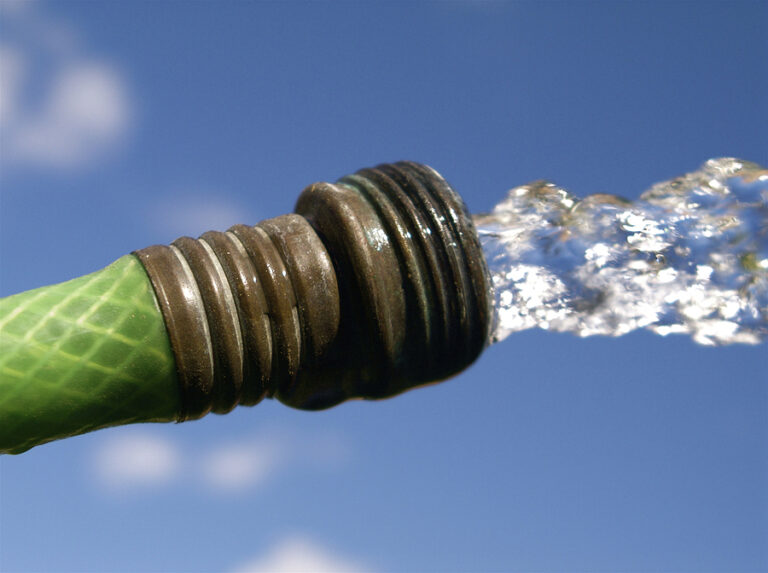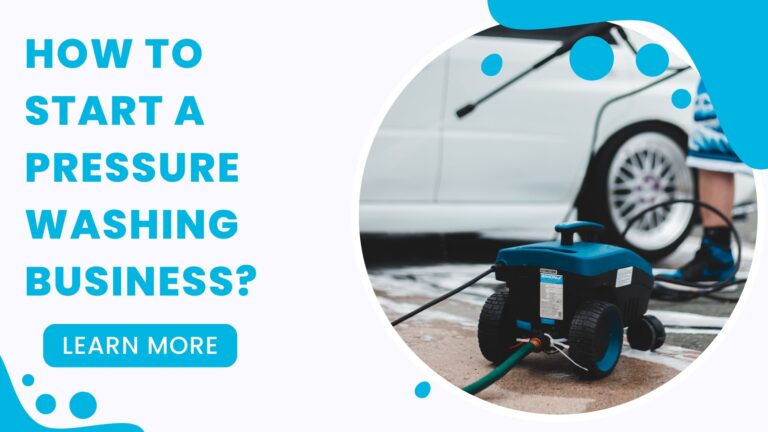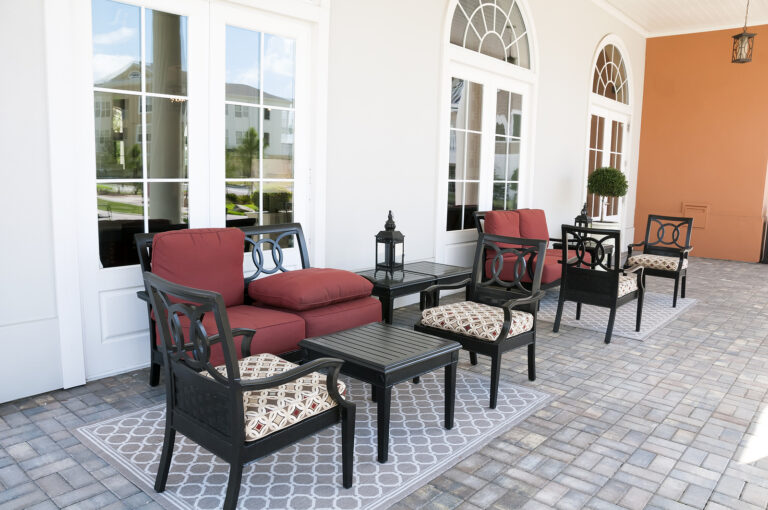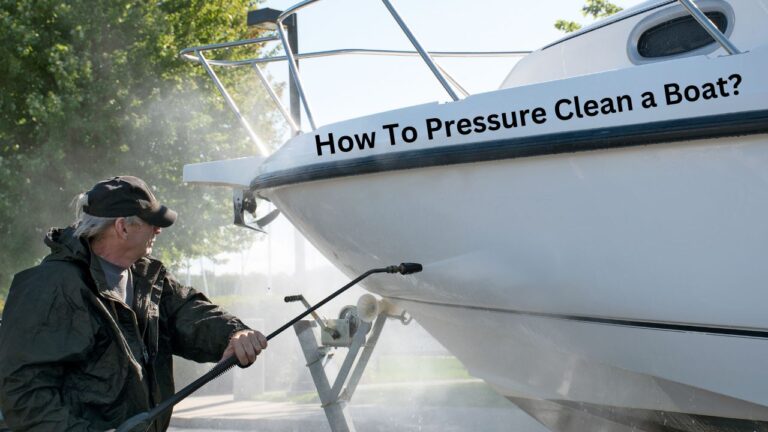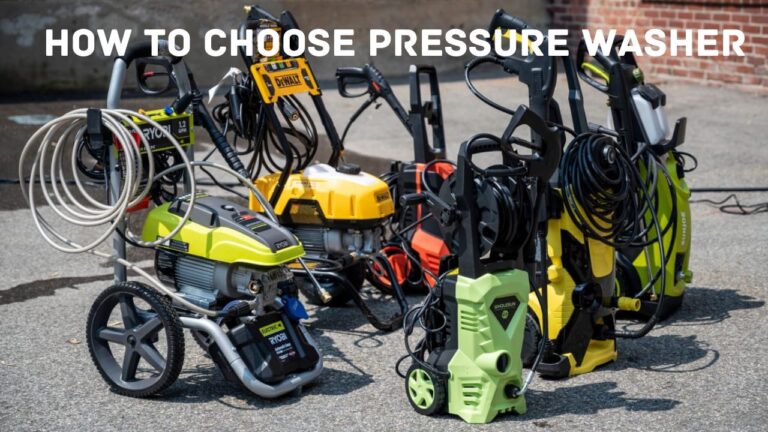How to Remove Mold and Mildew From Concrete?
Are your concrete surfaces under attack by mold and mildew? Have you tried every possible method to eliminate them, but they reappear and spread?
There may be some methods you have yet to try. Therefore, we have you covered with our proven techniques to help every homeowner maintain their pride.
In this article, we’ll examine why mold loves concrete and review the best strategies for cleaning mold off concrete patios and driveways to ensure it doesn’t make a wild card entry ever again!
It’s time to take action!
Why Does Mold Grow On Concrete? – A Love Story
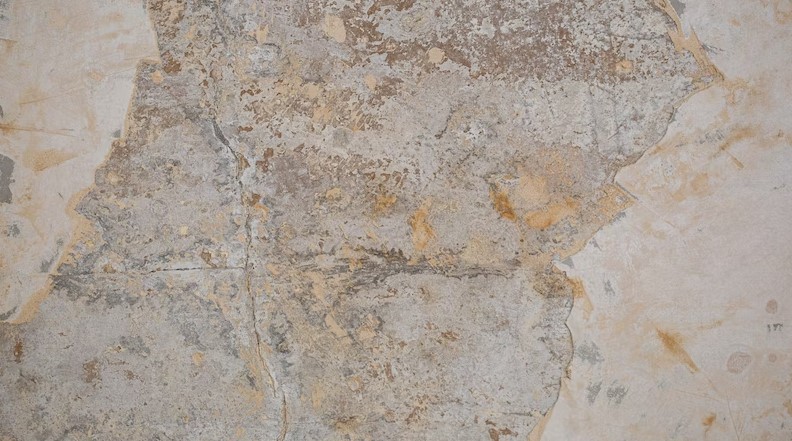
Concrete is a common raw material used to construct driveways, patios, and garage floors due to its strength and durability.
However, its porous surface serves as an incubator for the growth of mold and mildew, where a damp climate or moisture trapped in those tiny nooks and crannies acts as a catalyst.
Once those green and white blotches appear on your concrete surfaces, unfortunately, their love story ruins the aesthetics and presents severe health hazards like allergic reactions, hay fevers, and more.
Is Black Mold On Concrete Dangerous? – Risks And Symptoms
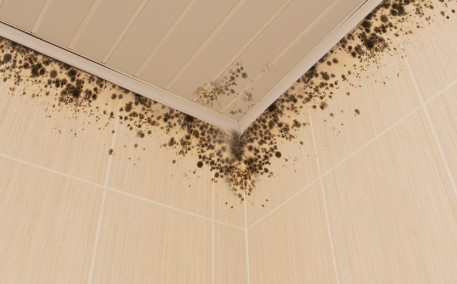
There’s no doubt about the question: is mold on concrete dangerous? After all, it looks hideous! However, it poses more threats than just looking awful.
Here are our two cents on how toxic black mold can be. Black mold releases poisonous mycotoxins when they grow on damp and decaying surfaces.
Although the severity of the symptoms may vary from person to person, believe us, it won’t kill you. That, again, doesn’t mean you become careless and start keeping it as a pet 🙂
Following are some common black mold symptoms you should not ignore:
- Sneezing and wheezing
- Headaches and dizziness
- Pneumonia
- Skin and eye irritation
- Fever
5 Effective Ways To Remove Mold and Mildew From Concrete Surfaces
Before we mention the mold removal strategies, ensure you have worn protective gear like gloves and a mask. We also suggest you do a small patch-cleaning test to choose the best method for yourself and guarantee that no damage occurs.
Here are five easy ways to get rid of mold forever:
Scrub It With Liquid Bleach
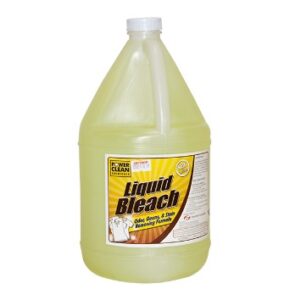
If the mold has severely infected your concrete patios and driveways, bleach is the most effective method to eliminate unwanted guests instantly.
Before preparing the solution, wear rubber gloves to protect your hands from burning or irritation.
It is important to dilute the concentrated bleach to save your walkways from damage.
Mix 1/4 cup of liquid bleach with 1 gallon of hot water in a large bucket. Now, soak your brush in the solution for several minutes and scrub your moldy surfaces with it.
Chlorine bleach is an excellent method to kill mold down to the root and stop it from returning.
Apply White Vinegar
Many people ask: will vinegar kill mold on concrete? If you are looking for a more natural cleaner, white vinegar will do the job for you. Its acidic nature is excellent for cleaning black and green mold.
Create a solution of white vinegar with three parts water and one part vinegar. To apply the solution, use a sponge or mop.
Then, vigorously scrub the concrete with a scrub brush to ensure the solution penetrates deeply into the pores.
To prevent future mold infestation, spray bleach and water solution for long-lasting results.
Blast It Away With A Pressure Washer
Once you have applied detergent, vinegar, or bleach, it’s time to use that old pressure washer in your storeroom. Attach a turbo nozzle to the hose, point it 10-12 inches away from the concrete surface, and blast the mold away.
A pressure washer between 1500 and 2000 PSI would be ideal for cleaning. Resist the temptation to use a power washer with a high PSI rating, as it can severely damage your driveways and patios.
Wash the area in a gentle overlapping motion to avoid streaking. This way, the mold will break up and easily wash away, leaving it as clean as new.
Once you have finished cleaning, waiting for the driveway to dry completely is important. This will allow you to confirm that you have not missed any mold spots.
Eliminate The Source Of Moisture
Why not eliminate the problem’s source by identifying the mold and mildews origin so it won’t return? If mold grows indoors, look for water seepage around the refrigerator and air conditioner pipes. If you examine any leaks in the roof or pipes, repair or replace them immediately.
Mold thrives in damp, shady areas, so if your driveway shows signs of mold, trim away any tree limb or shrubbery obstructing sunlight.
Ammonia Mold Solution
Ammonia is a powerful agent to cut off all the mold without the need to scrub or power wash. Ammonia solutions like RMR-141 can effectively kill thick layers of mold.
However, exposure to an undiluted ammonia solution can result in immediate burns to the eyes and respiratory passages, so it should not be used around children or animals.
FAQs
Is bleach or vinegar better to kill mold on concrete?
Bleach is typically considered more effective than vinegar at removing mold from concrete. Strong oxidizing properties in bleach make it an efficient way to eliminate stains and mold spores.
On the other hand, vinegar is a milder alternative and might not be as successful in thoroughly removing mold. Although vinegar can help prevent mold growth and eliminate some surface stains, its efficacy will depend on how bad the mold infestation is.
Will bleach kill mold and mildew on concrete?
Yes, bleach can effectively kill mold and mildew on concrete surfaces. Bleach contains active ingredients, such as sodium hypochlorite, with disinfecting solid properties that can eliminate mold and mildew spores.
How do you get rid of mold and mildew permanently?
Bleach can eliminate almost all types of indoor mold upon contact, including mold spores. This results in a sanitized surface that can resist future mold growth.
What is the best thing to kill mold and mildew?
The circumstance and surface determine the best method for killing mold and mildew. In general, using bleach and water together is a good option. Mold and mildew can be eliminated from concrete by applying diluted bleach (typically 1 part bleach to 10 parts water). Using a pressure washer right after would give you mind-blowing results.
What kills 100% of mold?
It is difficult to guarantee the complete eradication of mold since microscopic mold spores are pervasive in the environment. However, several methods can effectively reduce and control mold growth.
Combining thorough cleaning, proper ventilation, moisture control, and appropriate cleaning agents like bleach, hydrogen peroxide, or commercial mold-killing products can significantly reduce mold infestations.
It’s important to remember that addressing the underlying moisture issue and maintaining a dry environment is crucial in preventing mold growth in the long term. To ensure comprehensive remediation, seek professional assistance for severe or extensive mold problems.
Can you remove mold and mildew yourself?
Absolutely Yes! All you need to do is to put on protective gear and locate the source of the issue before attempting to remove mold and mildew. Put the area in a container, let it dry, and then scrub the harmed surfaces with a water-and-detergent solution or a mold-specific cleaner.
Use an antimicrobial solution or a solution made of water and bleach to clean the area. However, seeking professional help is wise if the situation is complicated or dangerous.
What is the best thing to kill mold and mildew?
One of the most effective substances for killing mold and mildew is bleach. Bleach contains active ingredients that have strong antimicrobial properties. It can effectively kill mold spores on hard, non-porous surfaces. Mix one cup of bleach with one gallon of water to create a bleach solution for mold removal.
On the other hand, ammonia is another great agent to clean the mold of your concrete surfaces but is not recommended due to possible risks and hazards.
How To Prevent Future Mold Growth?
You can permanently eliminate all the black and green mold, mildew, and debris with more effort.
Firstly, fill all the cracks in the pavement using a concrete repair product. Once you have removed the mold, let your concrete surfaces dry in hot, dry conditions for 2 to 3 days, and then seal the concrete with a good quality acrylic sealer.
Besides, a dehumidifier is an excellent tool for controlling the humidity in a basement and preventing mold growth on your decorative concrete items. Remove items like area rugs, cardboard, wood, and cloth furniture that can become wet and encourage mold growth.
Last but not least, make sure that when it rains, your home’s gutters effectively direct water away from the home.



